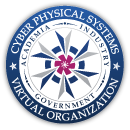Biblio
Virtual platforms provide a full hardware/software platform to study device limitations in an early stages of the design flow and to develop software without requiring a physical implementation. This paper describes the development process of a virtual platform for Deep Packet Inspection (DPI) hardware accelerators by using Transaction Level Modeling (TLM). We propose two DPI architectures oriented to System-on-Chip FPGA. The first architecture, CPU-DMA based architecture, is a hybrid CPU/FPGA where the packets are filtered in the software domain. The second architecture, Hardware-IP based architecture, is mainly implemented in the hardware domain. We have created two virtual platforms and performed the simulation, the debugging and the analysis of the hardware/software features, in order to compare results for both architectures.
Race conditions are difficult to detect because they usually occur only under specific execution interleavings. Numerous program analysis and testing techniques have been proposed to detect race conditions between threads on single applications. However, most of these techniques neglect races that occur at the process level due to complex system event interactions. This article presents a framework, SIMEXPLORER, that allows engineers to effectively test for process-level race conditions. SIMEXPLORER first uses dynamic analysis techniques to observe system execution, identify program locations of interest, and report faults related to oracles. Next, it uses virtualization to achieve the fine-grained controllability needed to exercise event interleavings that are likely to expose races. We evaluated the effectiveness of SIMEXPLORER on 24 real-world applications containing both known and unknown process-level race conditions. Our results show that SIMEXPLORER is effective at detecting these race conditions, while incurring an overhead that is acceptable given its effectiveness improvements.



